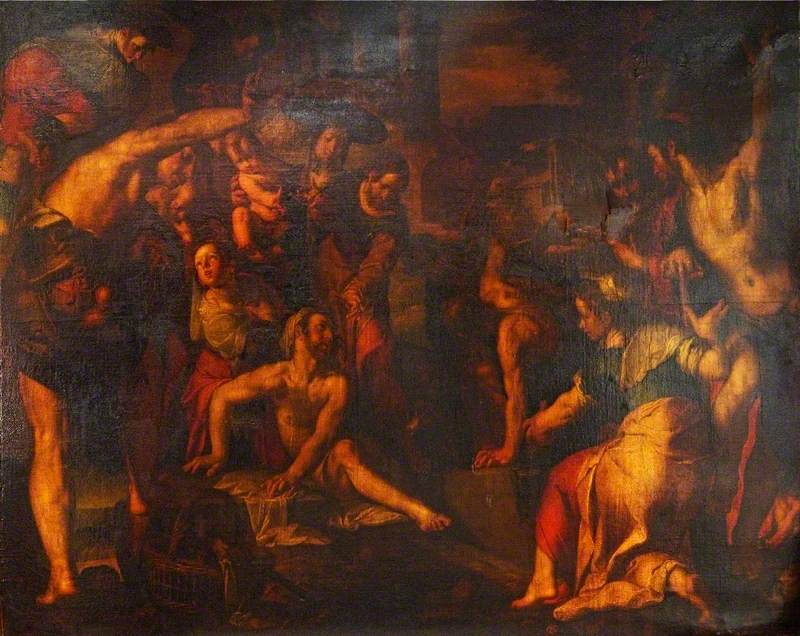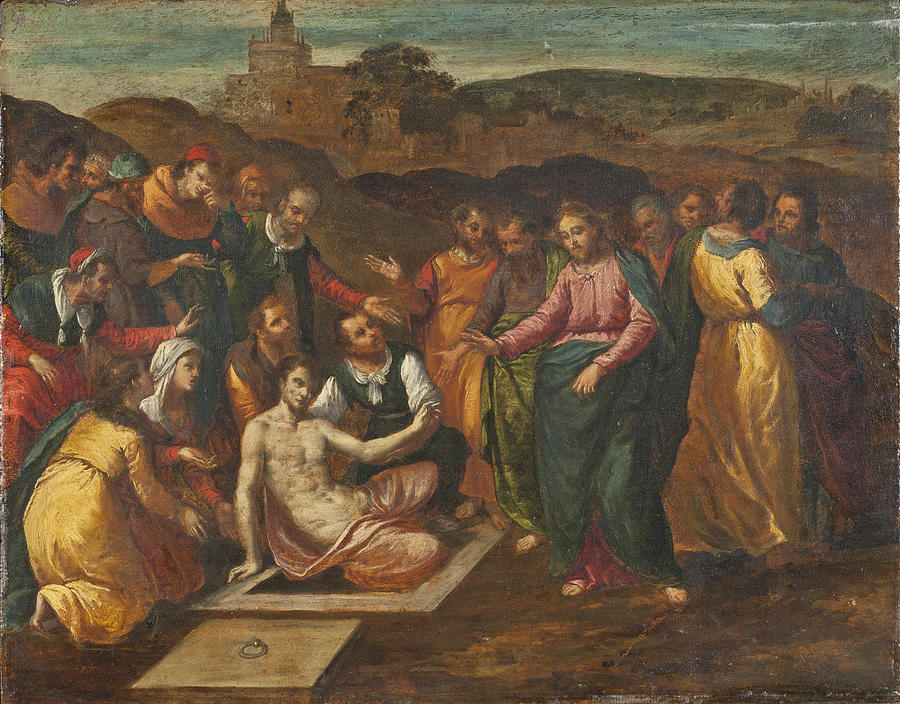
Some of the most beautiful words that I have ever heard as a penitent and have the privilege to utter as a priest of Jesus Christ are the words of absolution. Jesus still calls out to each one of us when we go astray: “Lazarus, come out!” The confessional has been referred to as a tomb, where a dead Lazarus goes in repentant, confessing his sins and willing to make amends, and, by the power and grace of Jesus Christ, shows how we are restored to life by absolution.
#THE RAISING OF LAZARUS FREE#
Evidence of incised lines, brush underdrawing, water gilding with punchwork, mordant gilding, and finely hatched brush strokes, all of which are characteristic of this method, are visible upon close examination.This passage of the raising of Lazarus from the dead has been looked upon as how the early Church looked upon how we are restored and made new at baptism as well as how we are restored if we have destroyed the free gift of sanctifying grace by committing mortal sin after baptism.

Duccio’s method of applying paint is an excellent example of the egg tempera technique described by Cennino Cennini. The paint layer is in exceptional condition, although the flesh tones appear somewhat greener than originally intended because the terre verte underpainting has become more emphasized with time. The panel was transferred in the early twentieth century, when such interventions were more common.

Much of the gilding in the background, however, is modern. For a painting that is almost seven hundred years old, the Kimbell panel is well preserved. The more vertical posture would have served as a visual stop at the end of the nine-panel predella. The compositional change in the figure of the Lazarus from an incumbent to an upright position in The Raising of Lazarus may have been due to the panel’s placement at the far right side of the predella. Most of the panels are today in the Siena Cathedral museum. This and several other panels became separated from the Maestà after it was dismantled in 1771. The paint surface, thinned by age, reveals an underlying paint layer showing a horizontal sarcophagus. Duccio shows the moment when Jesus called Lazarus forth from the tomb, prefiguring his own Resurrection.Ī noteworthy compositional change is apparent at the lower right. By the time Jesus arrived in Bethany, Lazarus was already dead four days. The Gospel according to John (11:1–44) tells how when Lazarus fell ill, his sisters Martha and Mary sent for his friend Jesus. The Kimbell Raising of Lazarus was most likely the final scene of this back predella, providing the climactic proof of Christ’s divinity, when he brings a man back from the dead. The front predella (a boxlike base) depicted events from Christ’s childhood, and the back predella recounted his ministry. Some sixteen feet in height, it was painted on both sides, the front showing the Madonna and Child enthroned with saints and the rear showing episodes from the life of Christ. The Maestà was among the most beautiful and complex altarpieces ever made. The Kimbell painting originally formed part of the altarpiece known as the Maestà (Majesty), made for the high altar of Siena Cathedral.


He infused the prevailing Byzantine style with a more naturalistic, narrative mode. Duccio was the preeminent Sienese painter in the early years of the fourteenth century.


 0 kommentar(er)
0 kommentar(er)
